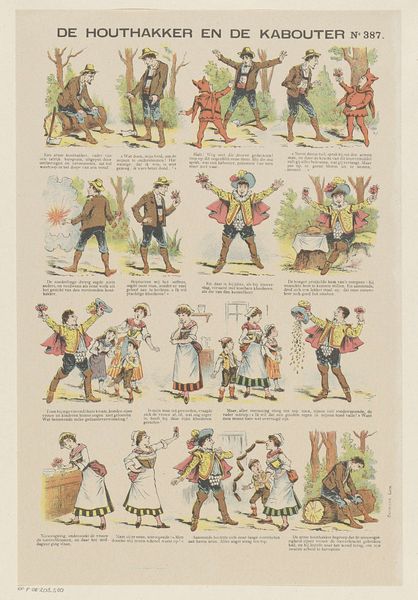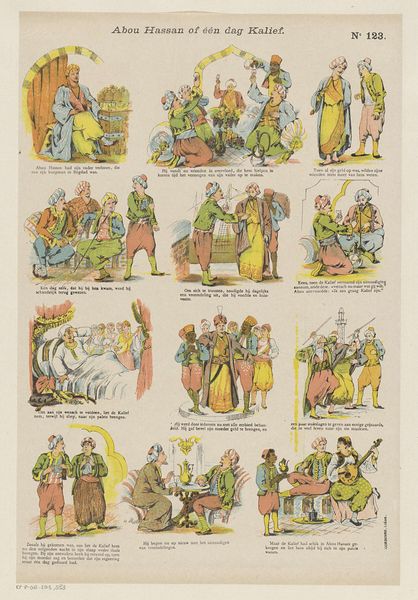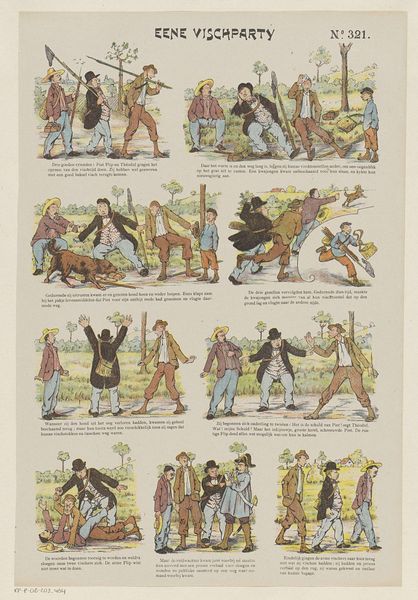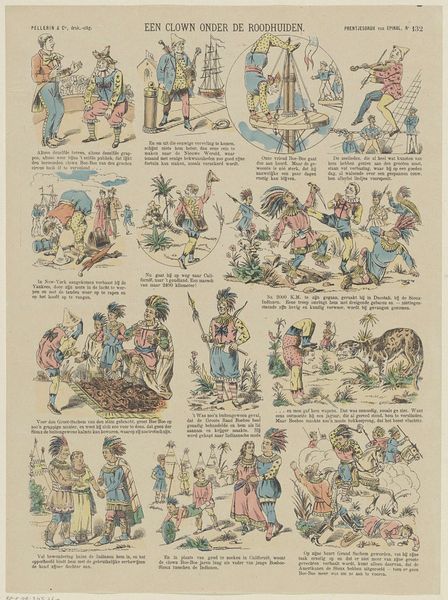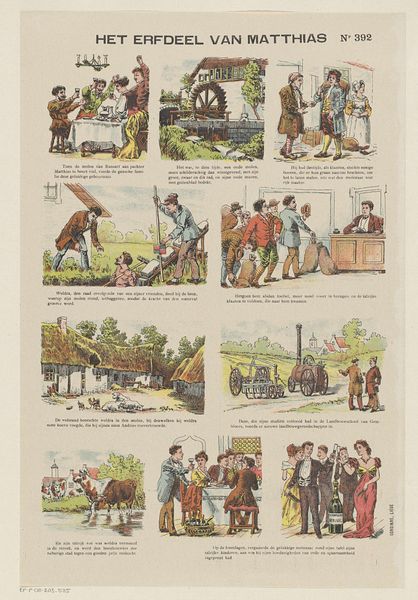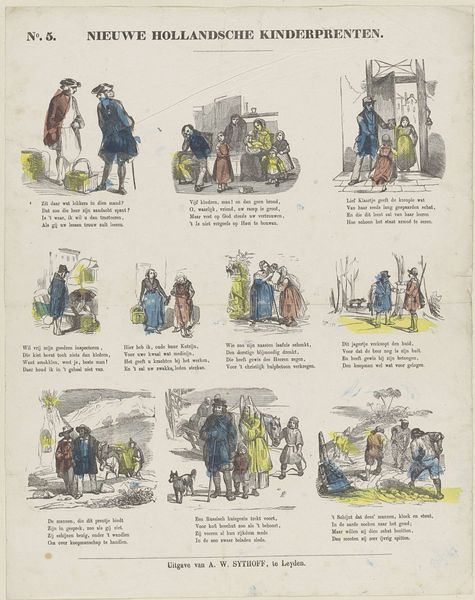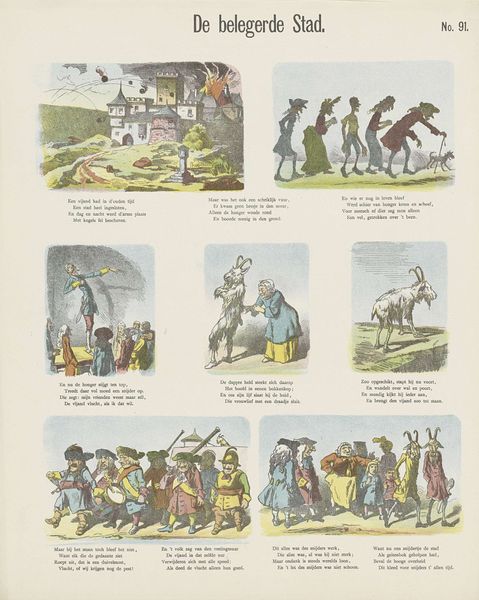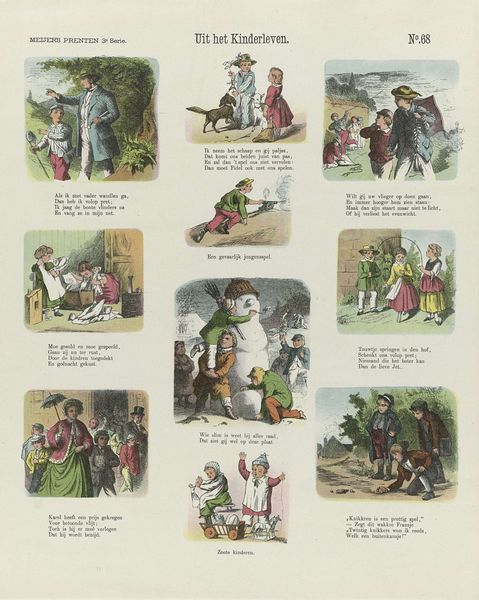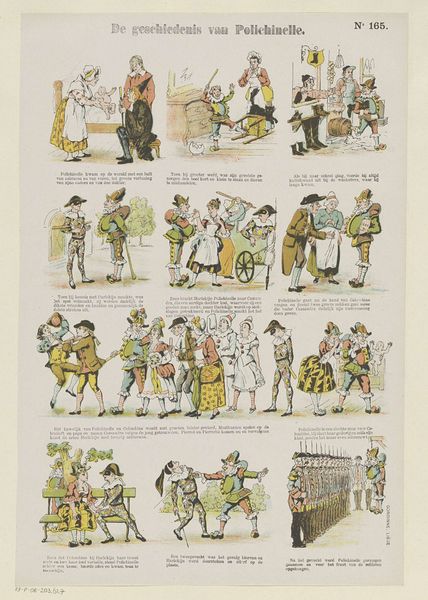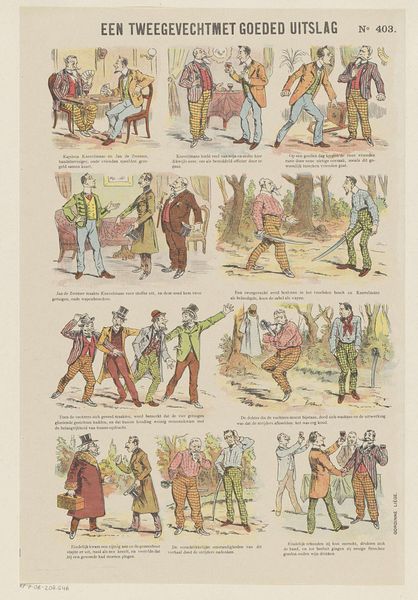
Dimensions: height 400 mm, width 263 mm
Copyright: Rijks Museum: Open Domain
Editor: Here we have Gordinne's "De Chocolaad," printed sometime between 1894 and 1959. It's currently held at the Rijksmuseum. The work reads like a... well, like a comic strip advertisement, with panels depicting the history and consumption of chocolate. What cultural narratives do you think this work reinforces or challenges? Curator: It's fascinating how advertising appropriates history to legitimize itself. The print visualizes the consumption of chocolate across social classes, implicitly equating access to it with prosperity and European civilization, isn't it? Who is included, and who is pointedly left out of the historical narrative presented? Editor: That's a good point! I noticed the depiction of Indigenous people in the top row. How does that imagery play into the colonial context of chocolate production and consumption? Curator: Exactly. Notice how the images transition from Indigenous peoples discovering cacao to European figures consuming chocolate in refined settings. It suggests a historical progression that justifies colonial exploitation. What social values do you think were being marketed alongside the chocolate itself? Editor: Maybe ideas of European sophistication and the rewards of colonialism? It’s unsettling to see it laid out so plainly. Curator: Precisely! The act of framing chocolate within these visual stories isn’t just about selling a product; it's about selling an ideology. The format mirrors historical timelines, presenting biased viewpoints as neutral facts. The composition turns history into an easy to swallow sales pitch. Did you note other persuasive techniques the creator applies? Editor: Well, using cute kids in the last scene definitely evokes nostalgia, and even innocence, associating positive sentiments with their product. It gives the print enduring emotional appeal, too. Curator: That is quite right! We see a confluence of history, commerce, and political messaging working together. The social influence of advertising, especially in older mediums like prints, becomes evident when examined closely.
Comments
No comments
Be the first to comment and join the conversation on the ultimate creative platform.

